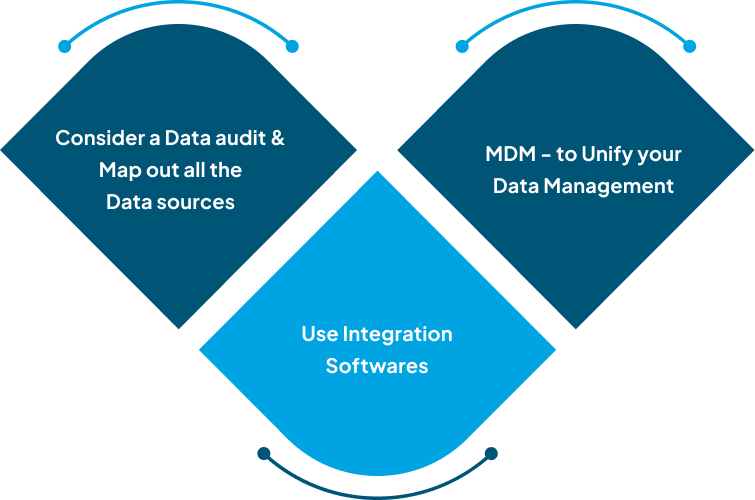Quick Summary:
dbt is a data transformation tool specifically designed for analytics engineers and data analysts. It takes a SQL-centric approach, allowing teams to leverage their existing SQL skills to build and maintain robust data models and transformations. Unlike traditional ETL tools that rely on proprietary languages or visual interfaces. dbt embraces SQL, the language that data professionals are already familiar with.
In essence, dbt acts as a powerful complement to existing data pipelines and ETL processes. It streamlines the “Transform” stage by providing a SQL-centric approach, version control integration, modularity, testing, and documentation capabilities. By incorporating dbt into your data infrastructure, organizations can build and maintain robust, modular, and testable data pipelines, enabling more efficient and reliable analytics.
Want to experience data driven success? Try Innovatics. We are advanced data consulting company and one of top consulting firms that commit to go beyond ideas, turn data into action and achieve tangible results.
To establish a strong data culture and leverage the full potential of your data assets, considering the implementation of dbt can be a game-changer. With its unique features and capabilities, dbt can significantly enhance your data pipelines, ensuring that the insights derived from your data are accurate, reliable, and deliver tangible business value. Continue reading to learn more.
dbt (Data Build Tool) Overview: What is dbt and What Can It Do for My Data Pipeline?
We all know the importance of data for an organization and we know that success heavily relies on the ability to extract meaningful insights from raw, fragmented, and unstructured data.
However, before those crucial insights can be unveiled, data must undergo a series of pipelines and processes.
This is to transform data into a structured and organized form for both accessibility and analytics.
This is where it becomes important to learn about dbt, or Data Build Tool.
This solution comes into play as a powerful solution for streamlining and enhancing data pipelines, particularly the Extract, Transform, and Load (ETL) process.
Let’s dig deep into the subject..
And in case you wish to incorporate data science / data culture in your organization to know what a data build tool can do for your data pipelines it’s crucial to you. Let’s begin with the differences first…
The difference
-
Data Build Tool:
Data build tool is a broad term that encompasses software applications that are designed to automate various aspects of data science and data management processes. It includes tools for data extraction, transformation, loading, orchestration, and monitoring. Data build tools facilitate the construction of data pipelines and workflows to streamline the movement and processing of data within an organization. With dbt, you can write custom rules for how your data should be handled, test it to make sure it’s good quality, and then put it into action without a lot of extra hassle.
-
Data Pipeline:
Data pipeline is the end-to-end process of moving data from its source to a destination. It typically involves multiple stages such as extraction, transformation, and loading. Data pipelines can be implemented using a combination of custom code, scripting languages, and specialized tools. They enable organizations to automate data workflows, ensuring efficient and reliable data movement and processing.
-
ETL (Extract, Transform, Load):
ETL is another specific approach to data integration that involves three main stages:
- Extract: Data is extracted from one or more sources, such as databases, files, or APIs.
- Transform: The extracted data is transformed to meet the requirements of the target system or analysis. This may involve cleaning, filtering, aggregating, and restructuring the data.
- Load: The transformed data is loaded into a target system, such as a data warehouse or database, where it can be queried and analyzed.
Note- While ETL is a subset of data pipeline processes, it focuses specifically on the extraction, transformation, and loading of data. On the other hand, data build tools and data pipelines encompass a broader range of functionalities beyond ETL, including workflow orchestration, monitoring, and management.
This might be a little confusing to understand. You can continue to read the below illustration for more simplification. Or skip to the next point.
So, Let’s simplify it:
Imagine you’re baking a cake.
Here in this analogue consider the following:
-
The Data Build Tool is like your kitchen:
This is the place where all the magic happens. You organize your ingredients, tools, and space to make baking easier and more efficient. Similarly, a data build tool helps organize and automate the process of managing data.
-
Data Pipeline is like your recipe:
It guides you step-by-step on what to do. In our baking analogy, it’s the sequence of actions you follow to turn raw ingredients into a delicious cake. Similarly, a data pipeline guides the flow of data from its source to its destination, making sure it’s transformed properly along the way.
-
ETL (Extract, Transform, Load) is like the actual baking process:
It’s where you extract ingredients (extract), mix them together and bake (transform), and finally take the finished cake out of the oven (load). In data terms, ETL involves getting data from different sources (extract), shaping it to fit your needs (transform), and storing it in a usable format (load).
So, just like baking a cake involves using your kitchen (data build tool), following a recipe (data pipeline), and going through the baking process (ETL), managing data involves using tools to organize, guide, and process data to get useful insights.
The use – How is dbt (Data Build Tool) different from other tools?
dbt (Data Build Tool) is specifically designed for analytics engineers and data analysts. It differs from other traditional data integration and transformation tools like in several ways:
-
SQL-Centric Approach
dbt is built around SQL, which is the language that data analysts and engineers are already familiar with. It allows you to write easy SQL code to transform and model your data, rather than relying on a proprietary language or a visual interface.
-
Version Control:
dbt seamlessly integrates with version control systems like Git, allowing you to track changes to your data models and collaborate more effectively with your team.
-
Modularity and Reusability:
dbt encourages a modular approach to data modeling, allowing you to create reusable SQL code blocks (macros) that can be shared across projects and teams.
-
Testing and Documentation:
dbt has built-in support for testing your SQL models and generating documentation for your data transformations, making it easier to maintain and understand your data pipelines over time.
-
Orchestration and Scheduling:
While dbt itself doesn’t handle data orchestration or scheduling, it integrates well with other tools like Apache Airflow, which can be used to schedule and orchestrate your data pipelines.
-
Cloud Data Warehouse Integration:
dbt is designed to work seamlessly with modern cloud data warehouses like Snowflake, BigQuery, and Redshift, taking advantage of their scalability and performance capabilities.
Can dbt replace Data Pipeline and ETL (Extract, Transform, Load) / What it can do to your Data Pipeline?
dbt does not fully replace traditional data pipelines and ETL (Extract, Transform, Load) processes, but it can complement and improve certain aspects of them.
-
dbt With Data Pipelines:
While dbt is not a data pipeline orchestration tool, it can be integrated into existing data pipeline workflows. dbt focuses primarily on the “Transform” part of the pipeline. It allows you to write SQL transformations and models that can be executed as part of the pipeline. However, dbt relies on other tools to handle the “Extract” and “Load” stages of the pipeline.
-
dbt With ETL (Extract, Transform, Load):
dbt is designed to work with the ELT (Extract, Load, Transform) paradigm, which is more suitable for modern cloud data warehouses. In an ETL workflow, dbt can handle the “Transform” stage by allowing you to write SQL transformations that run directly on the data loaded into the data warehouse.
How can an advanced Data Analytics and AI company assist in this process
A data analytics and AI company like Innovatics can play a crucial role in assisting your organization to effectively implement and leverage dbt (Data Build Tool) within your data infrastructure. Innovatics expertise lies in providing end-to-end services that span from initial consulting and strategy formulation to hands-on implementation, training, and ongoing support. Innovatics can assess an organization’s current data landscape, identify suitable use cases, and recommend the optimal approach for seamlessly integrating dbt into existing data pipelines and workflows.
To foster data analytics and a strong data culture in your organization, connect now!










Neil Taylor
May 17, 2024
Meet Neil Taylor, a seasoned tech expert with a profound understanding of Artificial Intelligence (AI), Machine Learning (ML), and Data Analytics. With extensive domain expertise, Neil Taylor has established themselves as a thought leader in the ever-evolving landscape of technology. Their insightful blog posts delve into the intricacies of AI, ML, and Data Analytics, offering valuable insights and practical guidance to readers navigating these complex domains.
Drawing from years of hands-on experience and a deep passion for innovation, Neil Taylor brings a unique perspective to the table, making their blog an indispensable resource for tech enthusiasts, industry professionals, and aspiring data scientists alike. Dive into Neil Taylor’s world of expertise and embark on a journey of discovery in the realm of cutting-edge technology.